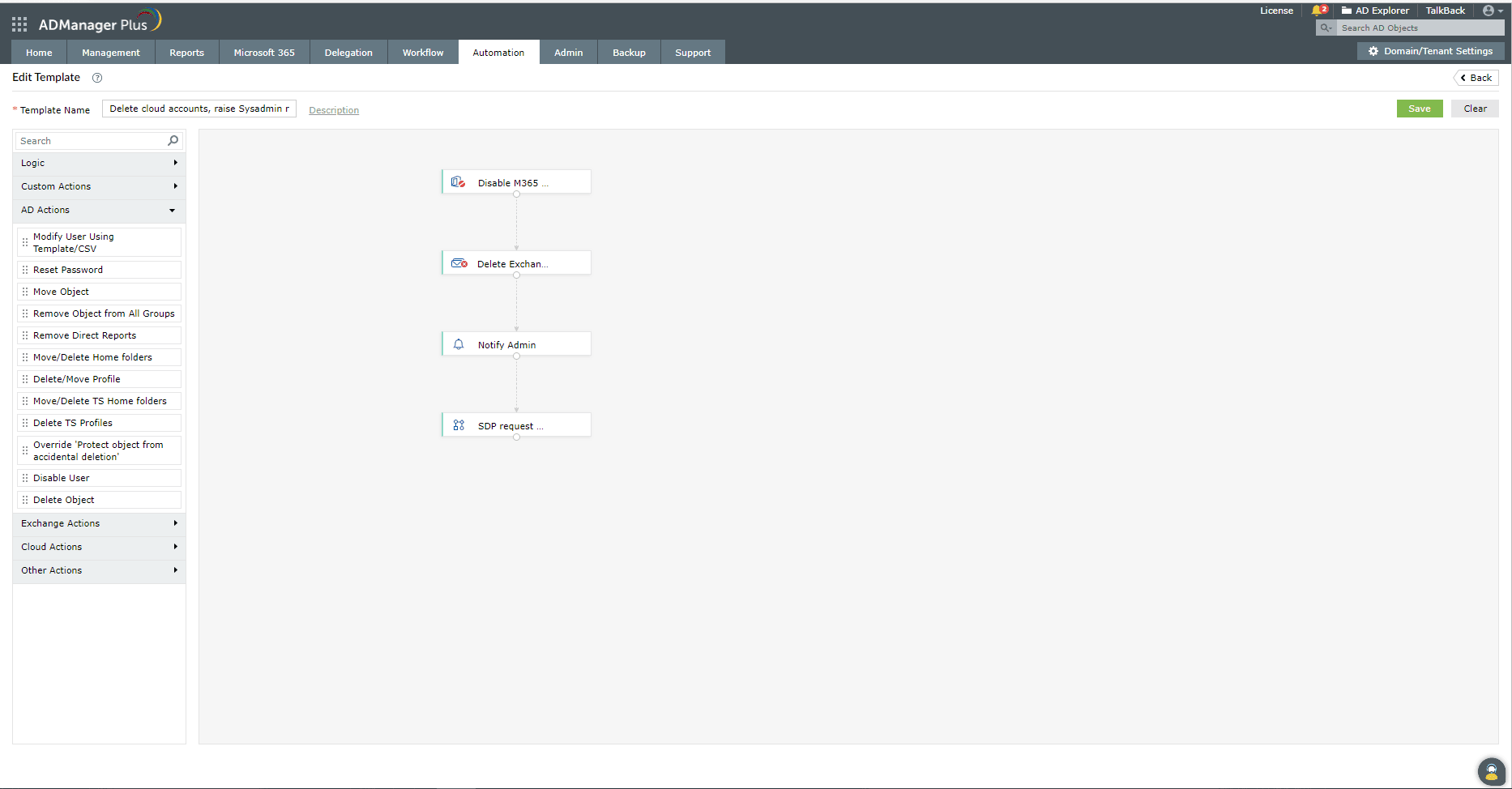- Related Products
- AD360
- Log360
- ADAudit Plus
- ADSelfService Plus
- EventLog Analyzer
- Exchange Reporter Plus
Orchestration Template
Orchestration templates in ADManager Plus allow you to automate multiple tasks in a sequence across identity platforms such as AD, Microsoft 365, and Google Workspace, as well as other enterprise applications through Application Integrations. On this page, you'll learn how these templates help admins streamline user provisioning, deprovisioning, and identity management tasks with customized event-driven automations.
What is orchestration?
Orchestration allows you to specify a sequence of tasks to be executed across multiple identity platforms automatically, after a particular task is executed. The time delay, the decision on the direction of action flow between the tasks, and the order of automated tasks can each be customized via orchestration templates.
Why do admins need orchestration?
When new employees are onboarded, modified, or offboarded, admins need to perform different management actions like enabling or disabling their user accounts, granting or revoking folder access permissions, adding or removing their group memberships, etc. Performing these tasks manually across different applications can be tedious, time-consuming, and increase the room for errors or potential security risks.
Hence, admins can utilize orchestration templates to automate user provisioning, deprovisioning, and all management tasks across identity infrastructures like AD, Microsoft 365 and Google Workspace. They can create as many templates as they need, set up defined action flows, and execute them through event-driven automations, scheduled automations, workflow actions, and advanced management.
What are orchestration templates?
ADManager Plus offers a no-code, visual drag-and-drop interface that allows help desk technicians and admins to set up the execution of different actions in a specific order using action blocks. The event sequences defined using action blocks determine the course of sequential tasks that will take place once a specific action is triggered.
The orchestration template supports multiple management actions in AD, Exchange, and Microsoft 365. It also has blocks for customized scripts and webhooks along with logic blocks that can decide the next action to be executed based on the previous block results or AD properties of the object.

Read the following pages to learn more:
How to configure an orchestration template
